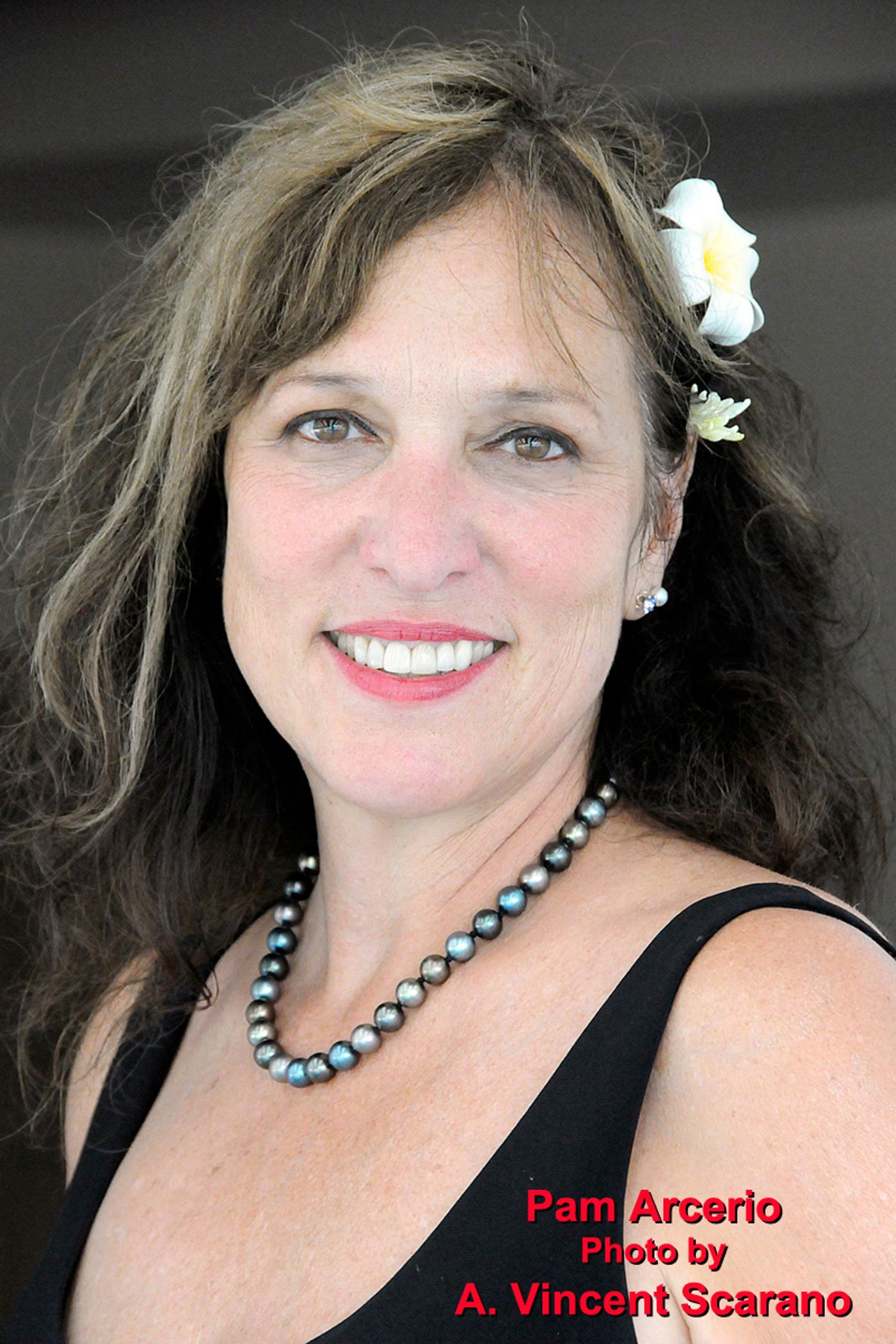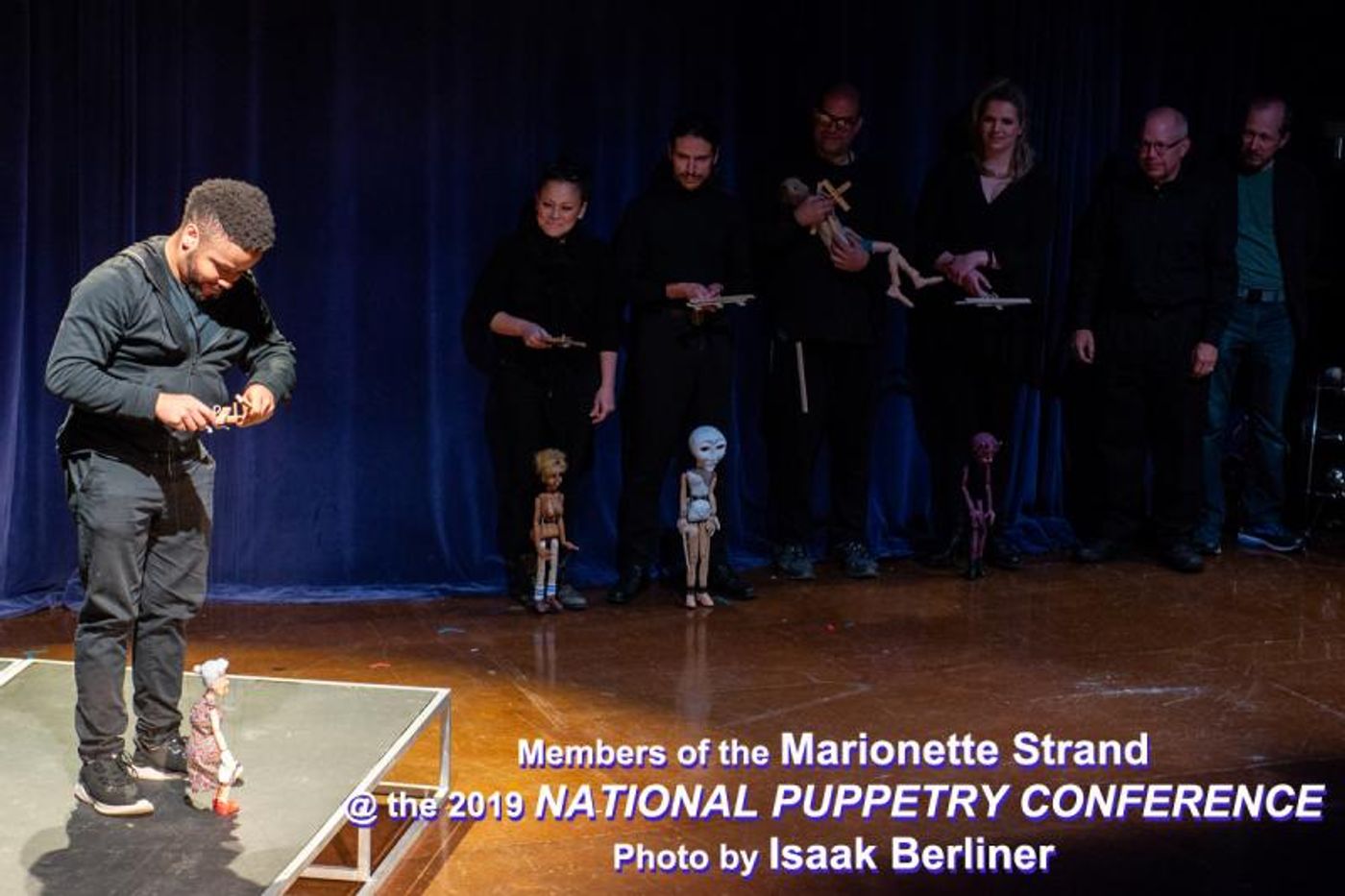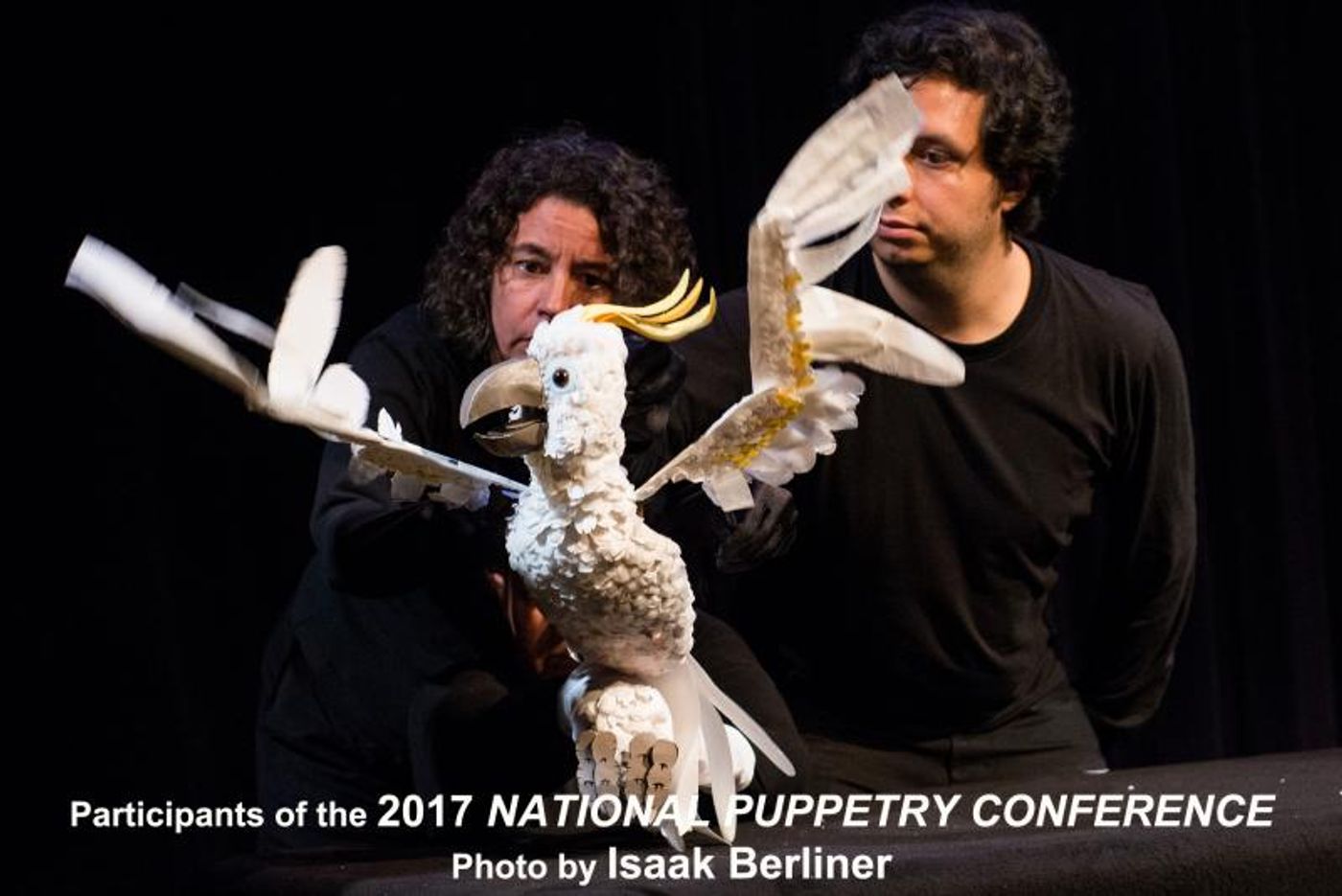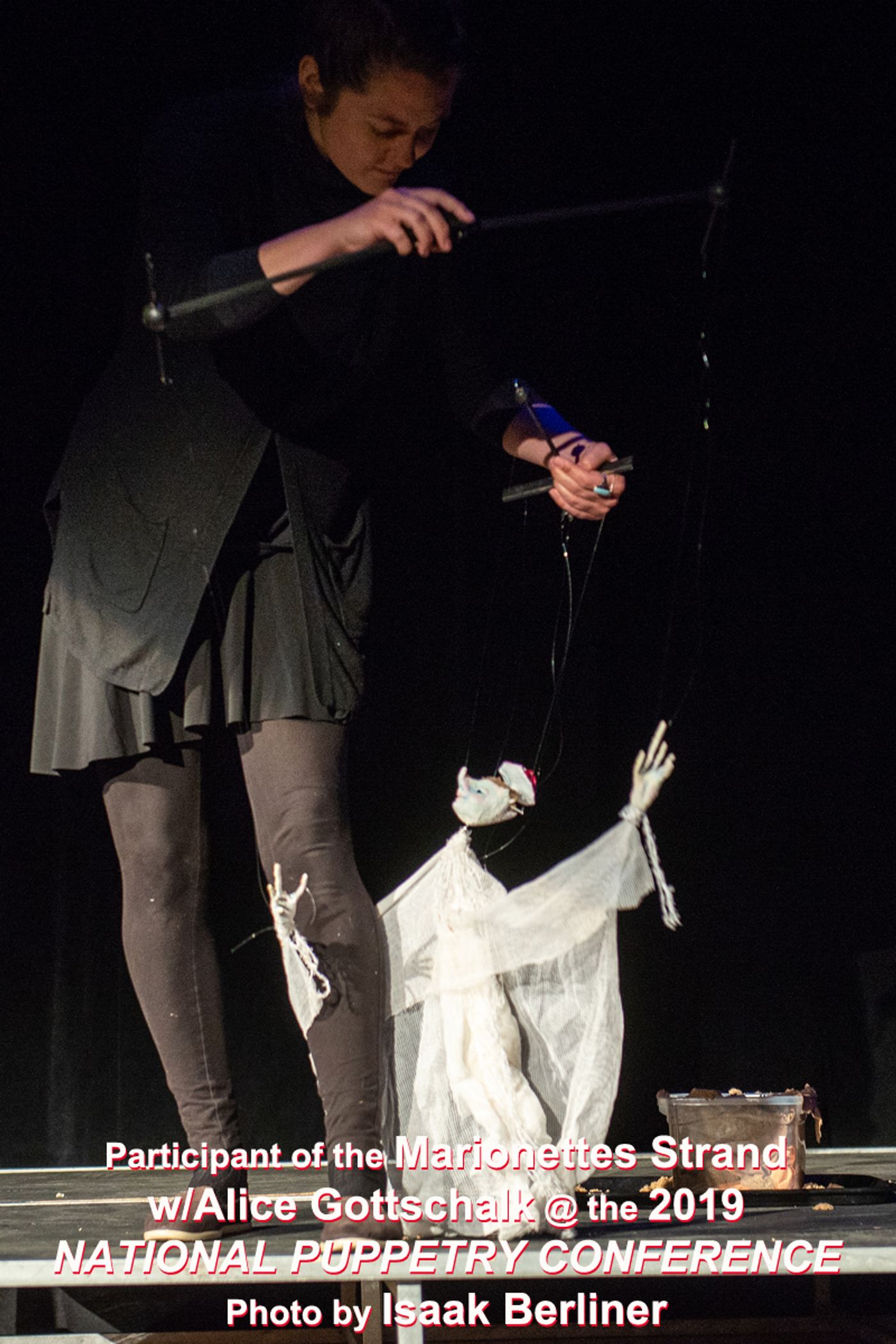Interview: NATIONAL PUPPETRY CONFERENCE's Pam Arcerio Pulling The Right Strings @ The O'Neill

First up in the Eugene O'Neill Theater Center's newly revamped 2020 Summer Season - now online, the 30th NATIONAL PUPPETRY CONFERENCE (PUP) running June 8 through June 12, 2020. PUP, with an already sold-out main CONFERENCE, is offering the public a series of five master classes, as well as, two free open mic puppet sessions. I managed to pull the right strings to pose a few socially-distanced questions to PUP's Artistic Director Pam Arcerio.
Thank you for taking the time for this interview, Pam! Hope you are healthy and staying safe.
Thank you! I am well and happy to do this interview.
So what are you doing to keep creative and sane, Pam?
The last three months have been spent re-imagining the NATIONAL PUPPETRY CONFERENCE for an online experience. It has required great creativity, not only to ensure that our wonderful faculty and master teachers are able to present the same level of instruction, but also to ensure that so many of the beloved elements of our yearly program find a place in the digital experience -- movement warm-ups, Pub Open Mics, Tea with Judy Rose, and our beautiful, pastoral campus. As well as, trying to create the sense of community that forms when artists come together in support of each other.
This will be the 30th NATIONAL PUPPETRY CONFERENCE, but your first being held virtually. Can you explain the new logistical challenges you had to overcome to mount this CONFERENCE?
So much of puppetry is hands on, literally. The building of a wooden marionette, learning to string and balance the puppet, yes, that can be taught on Zoom. How do you get specific materials to people so we all have the same forms to learn from? Or the actual feel of the puppet's balance? Or shadow puppets - we need the same screen so what is being taught can have a consistent level playing field. Fortunately, we are able to get the materials to the participants in advance of the conference. The great thing about Zoom is that it is two-way, so questions and issues can be asked in real time. If there is an issue with the way the puppet is working, we hope it will be addressed almost as if the Marionette Master was in the room. We are a live theater conference, although we often teach puppets on film, the mission is to create new live works of puppetry. Zoom and the camera are a slightly different experience for both the audience and the performer. It's a brave new world in that way. In the  performance strands, we are limited in how the puppets can interact with each other, as well as the puppeteers. A puppet that requires two or three people to operate will be sadly missing. So, there will definitely be a learning curve in those strands. The on-campus experience will also be missing, and that is a tough one to overcome. We will have virtual tours that the participants can take of the campus. Our favorite places, like the trees that have been planted in to honor the many puppeteers who have helped to make the conference what it is - the sunken garden, the gazebo, and of course, the beach. It is a beautiful place to make art. We hope the participants will take a break and look at the tours, just as they would on campus.
performance strands, we are limited in how the puppets can interact with each other, as well as the puppeteers. A puppet that requires two or three people to operate will be sadly missing. So, there will definitely be a learning curve in those strands. The on-campus experience will also be missing, and that is a tough one to overcome. We will have virtual tours that the participants can take of the campus. Our favorite places, like the trees that have been planted in to honor the many puppeteers who have helped to make the conference what it is - the sunken garden, the gazebo, and of course, the beach. It is a beautiful place to make art. We hope the participants will take a break and look at the tours, just as they would on campus.
To clarify, there's three ways one can participate in the 30th NATIONAL PUPPETRY CONFERENCE: 1) Register for the CONFERENCE, 2) Sign up for master classes, and 3) Zoom (for free) the two public mic sessions PUPPETS IN THE PUB. Am I correct?
Correct, we have 66 CONFERENCE participants (registration closed in January.) For the first time, in honor of our 30th CONFERENCE, we are opening up five master classes to ticket buyers. These are truly extraordinary artists from around the world. And we're encouraging everyone to RSVP for two of our free "pub open mics" PUPPETS IN THE PUB hosted by Tyler Bunch and Jon Little.
Aside from the absence of actual physical interaction, what positives do you see occurring from this online setup?
It has been wonderful to welcome people from across the country and across the world the chance to participate in our 30th CONFERENCE. One of the benefits of the virtual world is the number of people who will be able to hear our wonder Master Class artists. These events are usually only open to the participants and the staff of the NATIONAL PUPPETRY CONFERENCE. The wider audience will enable more people to understand our unique art form and hopefully encourage more people to see live puppetry when we can get back into theaters.
What cosmic forces originally brought the NATIONAL PUPPETRY CONFERENCE and the Eugene O'Neill Theater together?
 The Eugene O'Neill Theater Center in Waterford, CT is dedicated to encouraging and furthering the creative impulse which is at the heart of all theatrical expression -- and the puppet arts are no exception. In 1964, the pioneering American puppetry team (and Waterford, CT residents) Rufus and Margo Rose helped founder George C. White establish the O'Neill. This began a long-standing tradition of puppetry at the O'Neill, which continued through the efforts of puppet artist Bart Roccoberton. In 1990, Jane Henson established the Rose Endowment for Puppetry to support an annual puppetry conference -- thus paying tribute to the Rose's influential work -- and to assure the continuing presence of puppetry at the O'Neill. George Latshaw was the Artistic Director for the conference's inaugural year, followed by Richard Termine from 1992 - 2003. I was a participant at the first conference and have had the honor of serving as Artistic Director the past 18 years.
The Eugene O'Neill Theater Center in Waterford, CT is dedicated to encouraging and furthering the creative impulse which is at the heart of all theatrical expression -- and the puppet arts are no exception. In 1964, the pioneering American puppetry team (and Waterford, CT residents) Rufus and Margo Rose helped founder George C. White establish the O'Neill. This began a long-standing tradition of puppetry at the O'Neill, which continued through the efforts of puppet artist Bart Roccoberton. In 1990, Jane Henson established the Rose Endowment for Puppetry to support an annual puppetry conference -- thus paying tribute to the Rose's influential work -- and to assure the continuing presence of puppetry at the O'Neill. George Latshaw was the Artistic Director for the conference's inaugural year, followed by Richard Termine from 1992 - 2003. I was a participant at the first conference and have had the honor of serving as Artistic Director the past 18 years.
You took over your current position of artistic director in 2002, at the end of the 12th NATIONAL PUPPETRY CONFERENCE. What circumstances factored into your assuming such responsibility?
I have been involved in every conference in some form since the start. When my kids were tiny, I could only come to see the shows for a couple of years. I was the director of the Emerging Artists strand since 1998, at the 8th NATIONAL PUPPETRY CONFERENCE. This is a more advanced strand for artists wanting to create a longer work than a participant project. When Richard decided that he needed to step back a little from the leadership role, I was asked by the remaining founding members of the CONFERENCE to become the Artistic Director. It was intimidating at first, but Richard was right there, guiding me through it. I had lots of ideas for new programs and I had been directing a number of shows by then. Not quite the same level of responsibility, but I felt I had the experience to carry the conference forward.
You earned your BA in Dance and Drama from the University of Hawaii and your MA in Puppetry from the University of Connecticut. How young were you when you decided you wanted to be a performer? And then what made you decide to become a puppeteer?
 I grew up in Hawaii, where dancing and singing is what you do at most family parties. I loved performing always. I then found out you could study dance and get a job in the field, it just seemed the natural thing for me to do. I was in the dance program at the University of Hawaii when Kermit Love came to teach puppetry for the summer session. He was the man who built Big Bird and the Snuffleupagus for Sesame Street. It seemed like it would be a cool course, with someone coming all the way from New York; so I took it. He made me fall in love with everything to do with puppets. I knew then it was what I wanted to do for the rest of my life. And it has been. A truly extraordinary thing happened when I was invited back to the University of Hawaii to teach the same course that had inspired me to become a puppeteer. I felt I had come full circle,and I hope I have touched a puppeteer or two the same way Kermit Love inspired me. I hope the same for my participants at the O'Neill.
I grew up in Hawaii, where dancing and singing is what you do at most family parties. I loved performing always. I then found out you could study dance and get a job in the field, it just seemed the natural thing for me to do. I was in the dance program at the University of Hawaii when Kermit Love came to teach puppetry for the summer session. He was the man who built Big Bird and the Snuffleupagus for Sesame Street. It seemed like it would be a cool course, with someone coming all the way from New York; so I took it. He made me fall in love with everything to do with puppets. I knew then it was what I wanted to do for the rest of my life. And it has been. A truly extraordinary thing happened when I was invited back to the University of Hawaii to teach the same course that had inspired me to become a puppeteer. I felt I had come full circle,and I hope I have touched a puppeteer or two the same way Kermit Love inspired me. I hope the same for my participants at the O'Neill.
What was the first puppet show you ever saw?
That would have to be on TV. I don't remember any live puppet shows when I was young. Likely Captain Kangaroo or Shari Lewis.
Who was your puppeteer mentor?
It would be split between Kermit Love and Jim Henson. Jim was wonderful to work with, inspiring and fun. He also didn't pull many punches. When he liked what you did, he would say, "That was lovely!" (Imagine Kermit the Frog's voice) And if you messed up... well, he let you know that too. Jim and Kermit (the person) were different in their approaches to the art form, but both extremely creative and passionate about puppets.
You currently hold two positions with Jim Henson: principal puppeteer and secretary of the Board of Directors of his Foundation?
I am both. I am still a principal puppeteer with Sesame Street, performing Grundgetta Grouch and assorted characters. I am also secretary of the Board of Directors for the Jim Henson Foundation. We grant funding for puppetry projects and puppeteers that show excellence, under the guidance of Cheryl Henson. It dovetails nicely with my work at the O'Neill.
You must have your own collection of puppets to use in the classes you teach. How many puppets do you yourself own?
 Tough question. Counting shadow puppets? I am sure it is in the hundreds; just ask my husband. He has tolerated many storage areas in our household. You know, basements and attics full of puppets and shows. Funny puppet faces staring at you from unexpected places. The usual.
Tough question. Counting shadow puppets? I am sure it is in the hundreds; just ask my husband. He has tolerated many storage areas in our household. You know, basements and attics full of puppets and shows. Funny puppet faces staring at you from unexpected places. The usual.
Do you have a favorite puppet? Or is this a Sophie's Choice question?
It is a little Sophie's Choice. It would be between Grundgetta, since she is the character I have played for 38 years, and Leona Lion from a PBS show, Between the Lions. They are both near and dear to my heart. And they are both sides of who I am.
For the puppetry uninitiated, what is the difference between a puppet and a marionette?
In this country, a marionette is a puppet, but it is a marionette puppet always worked with strings. In Europe, all puppets are marionettes, strings or no strings, and marionettes are called string puppets. And the loose definition of a puppet is the inanimate object made animate.
Any new puppeteers you've come across that we all should be watching out for?
Ooh, this is a tough question. There are so many new and wonderful puppeteers out there, and it depends on what part of the country you are in. My advice would be to try to see live puppet shows as soon as you can and make your own choice. Check the Puppet Happenings at the Henson Foundation.org to see where you can view them all.
Thank you again, Pam! I look forward to checking out your PUPPETS IN THE PUB!
For tickets to the series of PUP's five master classes (or individual classes); log onto theoneill.secure.force.com/ticket
To RSVP for the free and open-to-the-public PUPPETS IN THE PUB sessions June 9 & 11, both @ 6p PST (as well as, other free and open-to-the-public Zoom events of The O'Neill's Summer Season); rsvp here
Join Pam Arcerio on June 7th, 4pPST for in-depth conversations and Q&A's as part of The O'Neill's ARTISTIC DIRECTOR SUNDAY SERIES. RSVP here.
Videos

